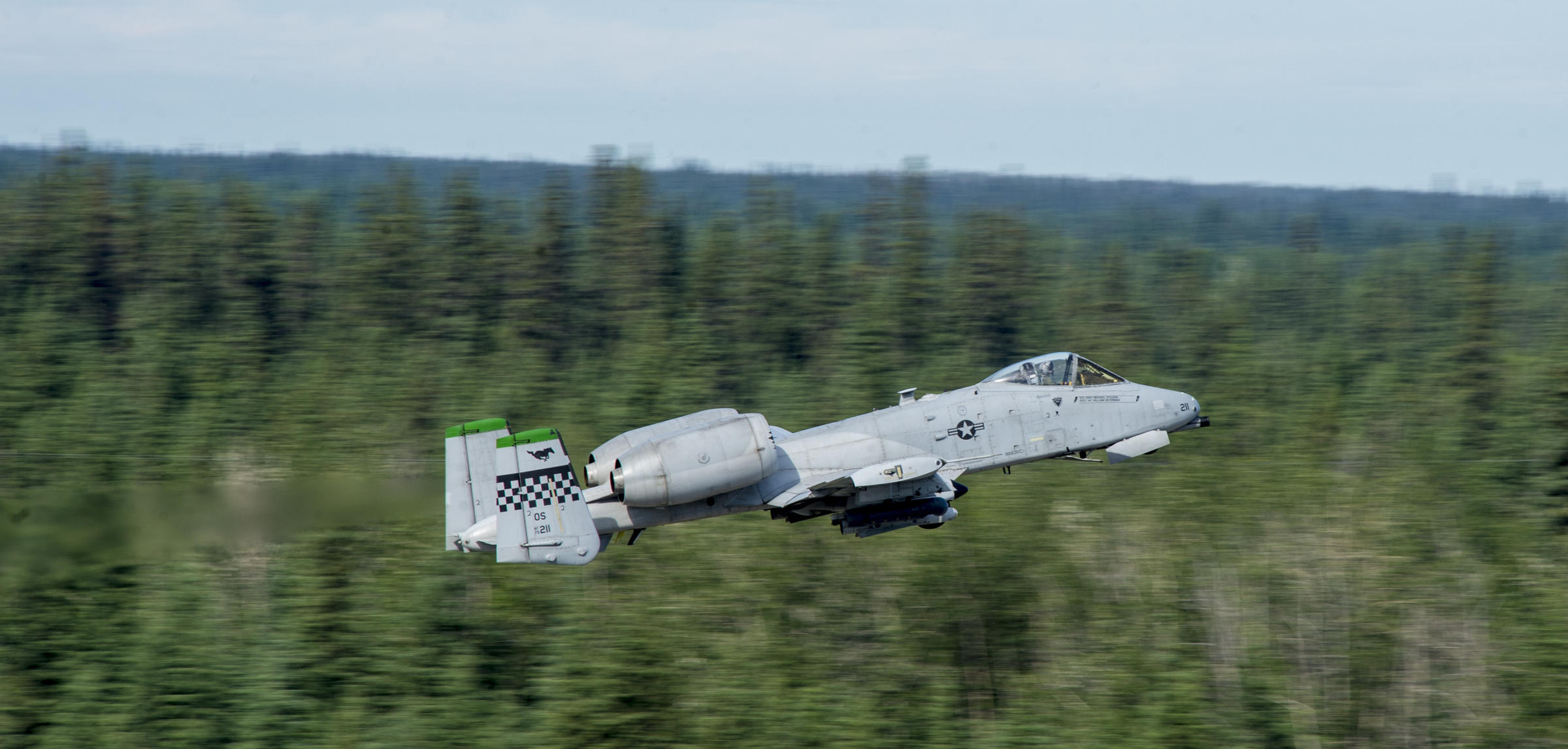
Eielson Air Force Base officials say they reminded pilots and their commanders participating in a training exercise last month that they cannot harass wildlife that wanders onto military training ranges during a recent exercise. The issue came up after a pilot asked for permission to flow low over several bison to scare them away from the Donnelly Training Area near Fort Greely, where the aircraft were preparing for a live-fire training exercise.
Officials with Eielson’s 354th Fighter Wing say Air Force personnel participating in a Red Flag training exercise last month followed regulations that require activity to be halted when wildlife is present on a training range. John Pennell is a spokesman for U.S. Army Alaska, which manages the Donnelly Training Area.
“You cease fire. You call it into range control. And range control then tells you ‘Wait until they leave,’” Pennell said.
Pennell said that’s basically what happened on June 13th after an Air Force pilot requested permission to flow low over a group of bison that had wandered into a part of the range where several A-10s were about to begin a live-fire training exercise.
“That might be your first impulse if you see something out there in an area where you want to be – to see if you can’t chase it away,” Pennell said. “But, we’re not permitted to do that.”
Eielson officials declined to talk about the incident, and instead issued a news release that says Air Force personnel overseeing the exercise and Army range-controllers denied the pilot’s request to buzz the bison. It says the pilots, with the Japan-based 25th Fighter Squadron and the 107th Fighter Squadron from a Michigan Air National Guard Base, then left the area.
Bob Schmidt is a wildlife biologist with the state Fish and Game office in Delta Junction, located a few miles from the big training ranges around Greely.
“It did not happen, because the pilot was told it is not allowed,” Schmidt said.
Schmidt said he talked with range control official late in the morning on the 13th who’d called to double check about state laws that, like the federal regulations, prohibit harassing wildlife.
“That’s a common thing, where wildlife is present and they can’t fire,” Schmidt said.
Pennell, the USARAK spokesman, agrees.
“It’s not an uncommon occurrence,”Pennell said. “It’s not always buffalo. Sometimes it’s moose. Sometimes, it’s nesting waterfowl, in a wetlands area.”
Delta resident Brian Corty also said it’s not unusual, based the military-frequency radio traffic he monitors with his scanner. But he says what he heard on that morning caught his attention.
“That’s the first time I’ve ever heard anyone trying to talk about anything to do with trying to manipulate animals,” Corty said.
Eielson officials said in their news release that all personnel involved in that day’s training exercise were reminded of regulations governing encounters with wildlife on training ranges. The release says officials determined no disciplinary action was warranted.
Tim Ellis is a reporter at KUAC in Fairbanks.




